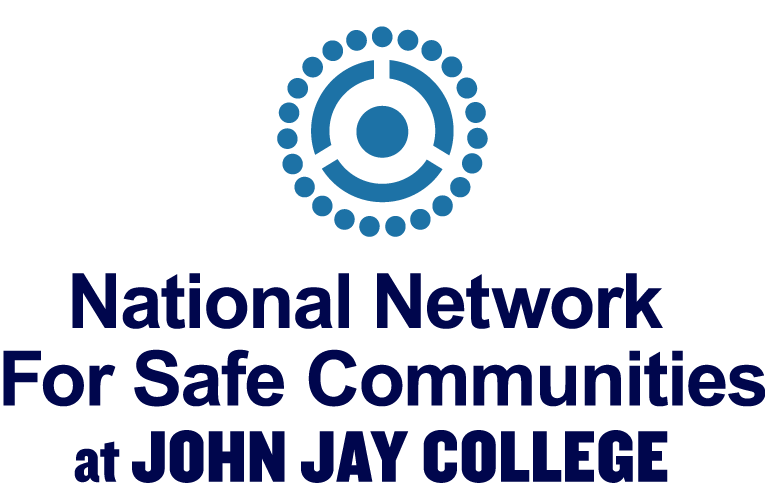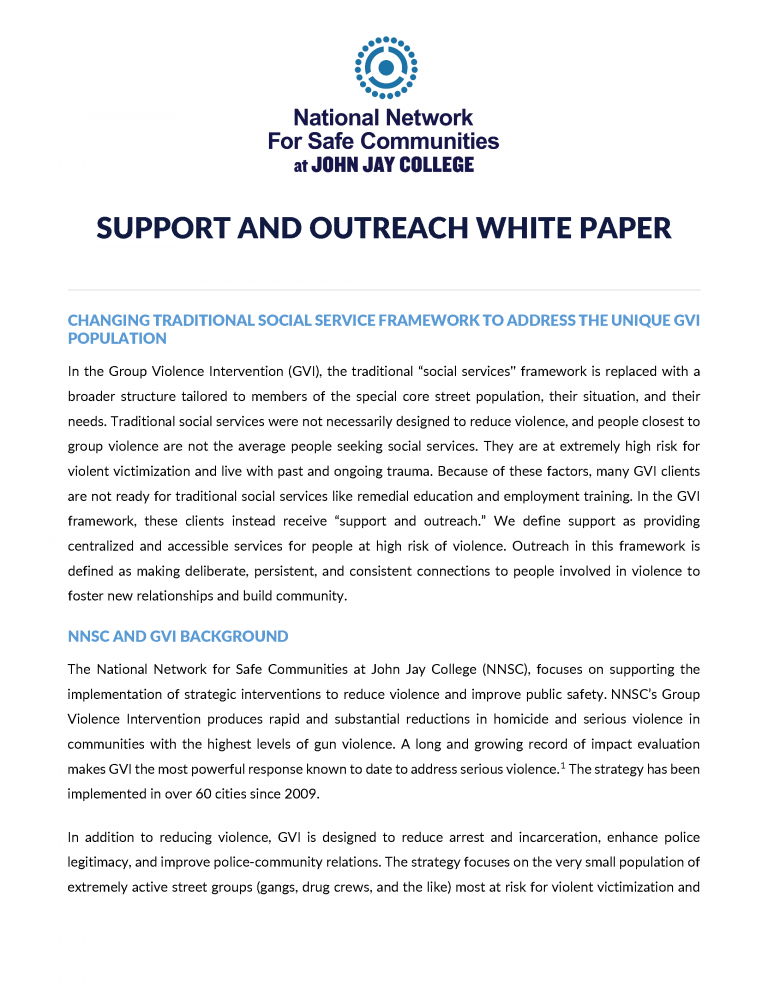
Support & Outreach White Paper
This white paper outlines a new “support and outreach” structure carefully tailored to the core street population, it's situation, and its needs.
Strategies for Change
“Social services cannot [reduce violence] alone. Community members cannot fight that battle alone…nor do I think police can. I think that we’ve got to work together.”
Reygan Harmon, Ceasefire Program
Director, Oakland Police Department
The Group Violence Intervention (GVI) reduces homicide and gun violence, minimizes harm to communities by replacing enforcement with deterrence, and fosters stronger relationships between law enforcement and the people they serve. National Network Executive Director David Kennedy and colleagues pioneered GVI’s evidence-based strategies with “Operation Ceasefire” in Boston during the 1990s. Subsequent GVI implementations across dozens of challenging cities, including Oakland, Chicago, Detroit, and New Orleans, have repeatedly demonstrated that violence can be dramatically reduced when community members join together with law enforcement and social service providers to focus a three-pronged antiviolence message on highly active street groups.
The GVI messages are simple: Community members with moral authority over group members deliver a credible moral message against violence. Law enforcement puts groups on prior notice about the consequences of further group-involved violence for the group as a whole. And support and outreach providers make a genuine offer of help for those who want it. A central method of communication is the call-in, a face-to-face meeting between group members and the strategy’s partners.
“I think the most important thing about the National Network and the focused deterrence strategy is that it’s a very powerful blend of a lot of the best of what we know about criminal justice today.”
Thomas Abt, Senior Research Fellow and Lecturer, Harvard University
When these three elements are in place, and partners across community, law enforcement, and support and outreach providers can work together, GVI fosters internal social pressure within groups that deters violence, elevates clear community standards against violence, offers group members an “honorable exit” from committing acts of violence, provides a supported path for those who want to change, and reserves strategic, group-based sanctions only for situations where group-involved serious violence persists.

Group members
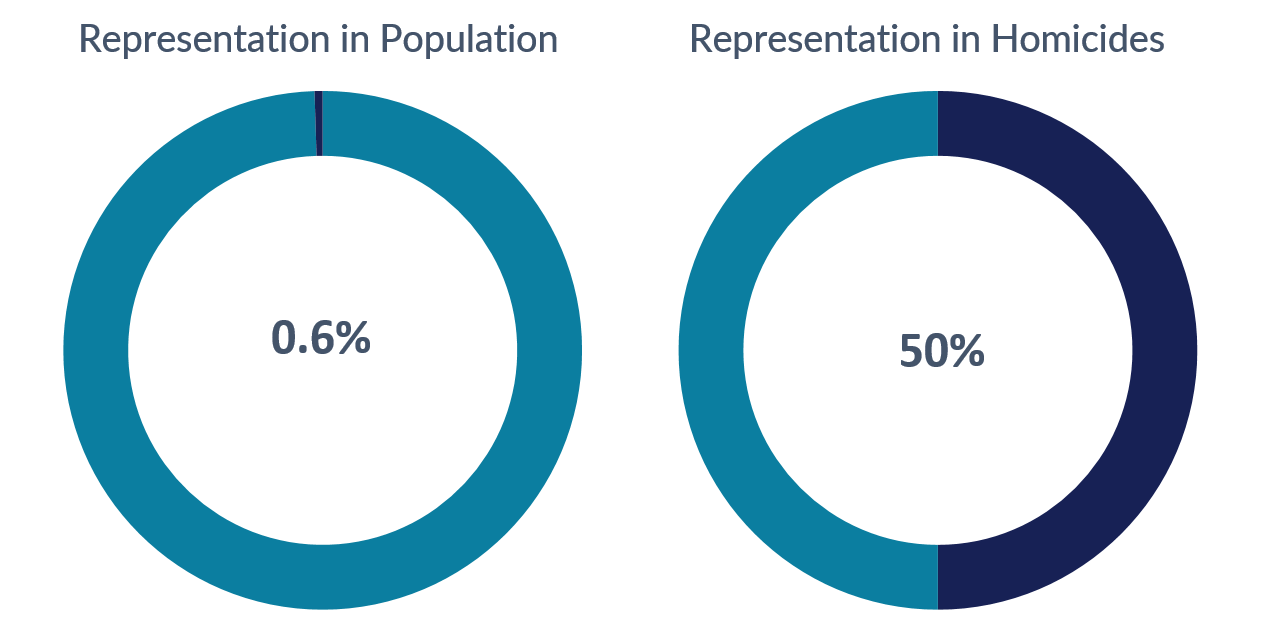
What are groups?
The term “group” refers to any social network whose members commit violent crimes together. This can include anything from chapters of organized national gangs with recognized symbols (such as the Gangster Disciples) to loose neighborhood crews with no hierarchy or business (such as a set that claims a particular block). All “gangs,” “posses,” “sets,” “crews,” “blocs,” and other associations are names for groups.

This white paper outlines a new “support and outreach” structure carefully tailored to the core street population, it's situation, and its needs.
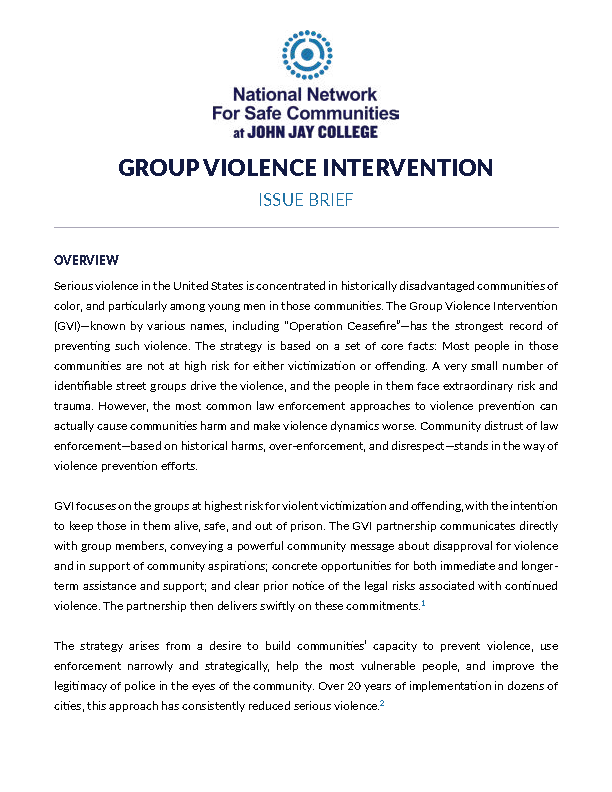
Serious violence in the United States is concentrated in historically disadvantaged communities of color, and particularly among young men in those communities. The Group Violence
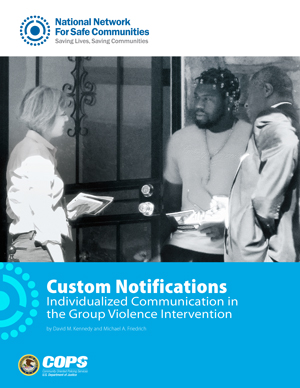
This guide provides practical information about “custom notifications,” an independent element of GVI that enables quick, tactical, direct communication to particular group members. This publication presents the custom notifications process, explains its value within the broader strategy, details its use by several national practitioners, and encourages further development.
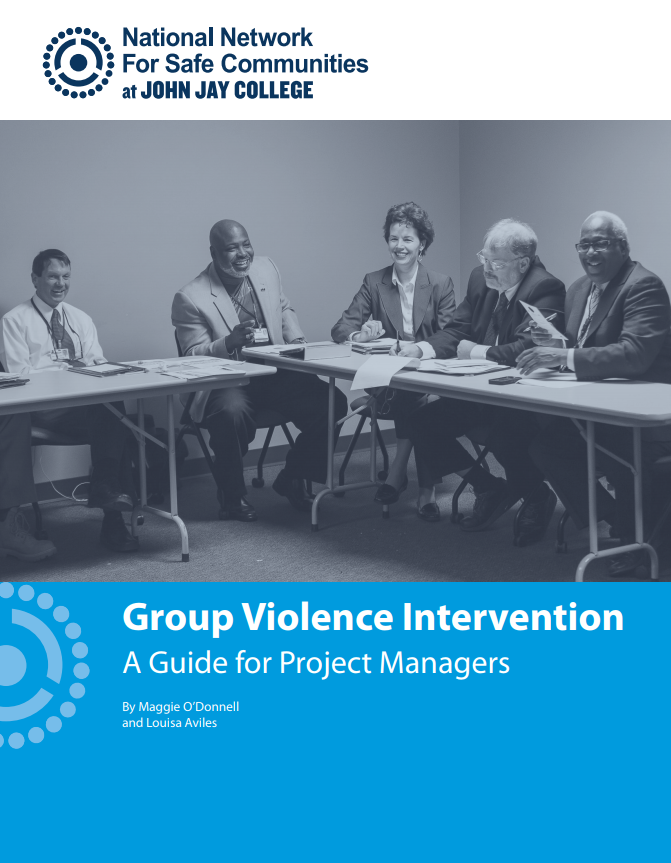
This guide is a high-level overview of the role of the Project Manager in the Group Violence Intervention. It outlines the key operational components of a successful GVI implementation and provides strategic insights from current and previous GVI Project Managers.
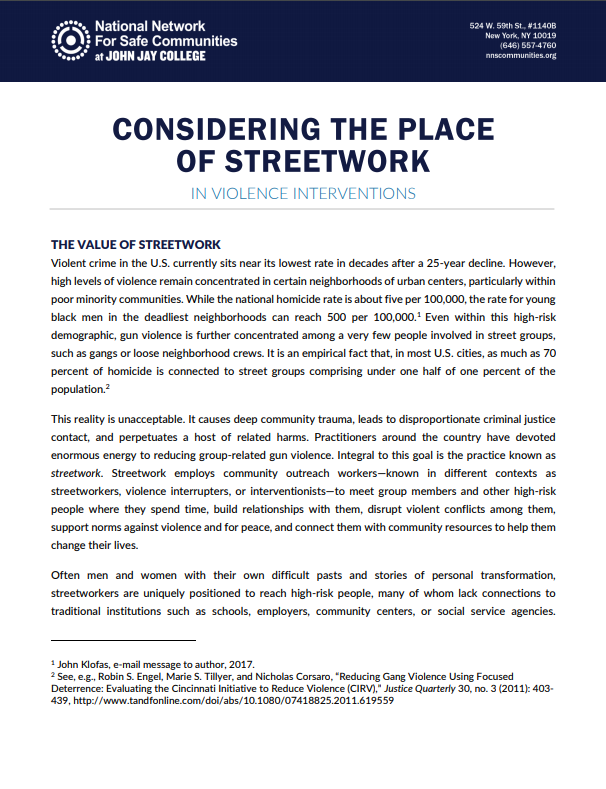
This white paper is a high-level overview of street outreach and the role it plays in violence intervention work. The paper assesses existing social science
Contact us to start a conversation about implementing the Group Violence Intervention in your community.

Even though the homicide rate in Pine Bluff in recent years is alarming — five have already taken place in this small city this year

DAVENPORT, Iowa (KWQC) – Davenport police says its Group Violence Intervention Program is seeing a decrease in re-offenders. The initiative aims to reduce violence in
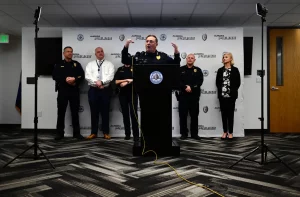
Officials in Aurora launched a new violence reduction program this fall that aims to decrease shootings by focusing attention on the tiny slice of the
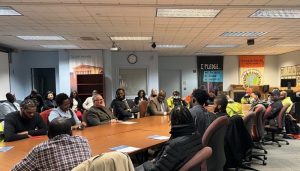
With less than one month left in his 8-year administration, Mayor Kenney made sure to sit down with participants of one of his favorite City
Office: 500 W. 56th St., Suite #031W • New York, NY 10019
Mailing: 524 W. 59th St., Suite #031W • New York, NY 10019
Privacy Policy
